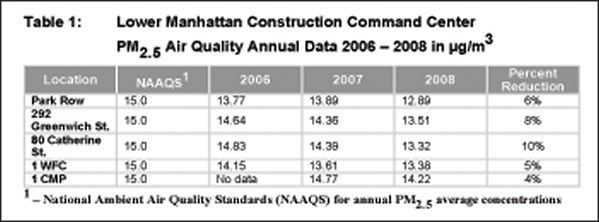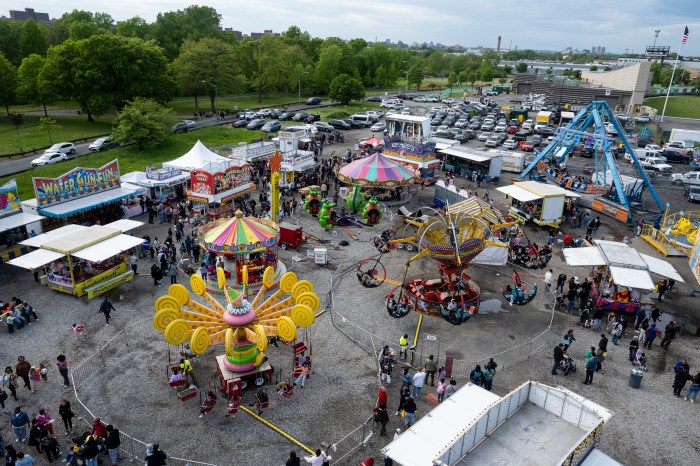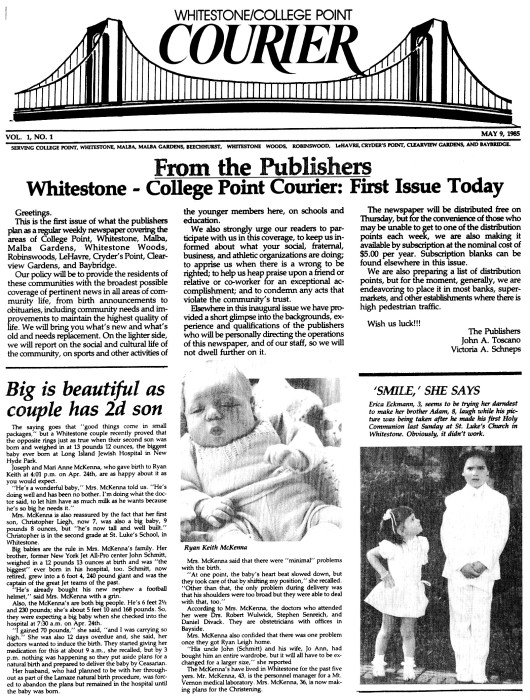Lower Manhattan’s air is getting cleaner, a Downtown agency reported last week.
Air samples taken from five locations below Canal St. showed less dust and diesel fumes in 2008 than in 2007, and most of the locations were cleaner than 2006 as well, according to the Lower Manhattan Construction Command Center.
“Our goal was either to maintain the background level [of pollutants] or reduce it if we could,” said Thomas Kunkel, director of environmental compliance for the L.M.C.C.C. “It all came together and we reduced it.”
Of the many factors that helped clean the air, the most significant is likely the increased regulation of federally funded construction projects, which include the World Trade Center rebuilding and the Fulton Transit Center. The contractors at those projects are required to install diesel particulate filters on their equipment. Also, those projects and many other public and private ones Downtown are using ultra low sulfur diesel fuel, which has become more widely available in the past few years and produces less pollution than standard diesel fuel.
In addition, many agencies, including the construction command center, have been cracking down on bus and truck idling, a particularly big problem among tour buses near the W.T.C. and the Seaport.
“We also have to give credit to nature,” Kunkel added. “Especially in the last year, we’ve gotten a lot of rain, which has the tendency to knock down the particulate — that fresh morning-after-a-rain effect.”
However, the pollution numbers were already coming down before the more recent rainy weather. The L.M.C.C.C. measures two types of pollution: particulate matter 10 (dust) and particulate matter 2.5 (vehicle emissions).
The amount of particulate matter 2.5 in the air near Park Row has decreased over 20 percent since 2001, when part of the street closed to traffic for security reasons. Back then, the pollution was above the federal standard, but since 2004 it has fallen well into compliance. Air samples from 292 Greenwich St. (near Chambers St.), 80 Catherine St. and the World Financial Center have also been in compliance since 2006, and have decreased 5 to 10 percent since then.
For particulate matter 10, Lower Manhattan has been far below the federal standard since 2005, the first year data is available. But even so, monitors at Greenwich St., Catherine St., the World Financial Center and One Chase Manhattan Plaza have noted decreases in the past two years, ranging from 4 percent to 13 percent.
Kunkel expects pollution rates to continue to decline based on the command center and other agencies’ efforts, though he said the numbers will eventually plateau.
— Julie Shapiro














